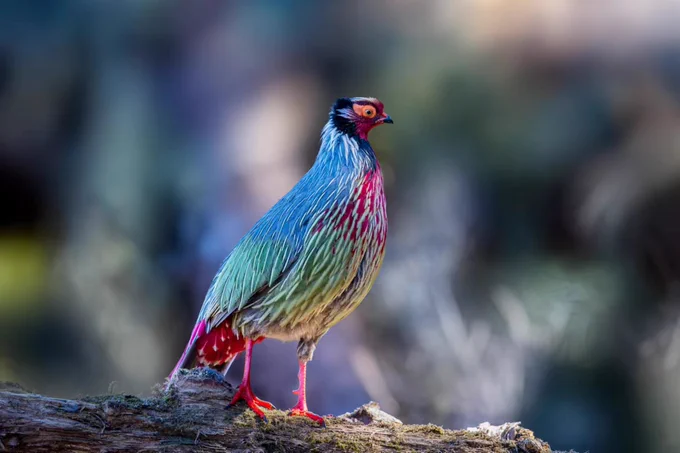The Himalayas, the world’s highest mountain range, are renowned for their breathtaking landscapes and unique biodiversity. Within this majestic region resides a true enigma of the avian world – the Blood Pheasant. This captivating bird, scientifically known as Ithaginis cruentus, is a species native to the eastern Himalayas and some neighboring areas in China.

The Blood Pheasant derives its striking name from its richly colored plumage, which resembles the deep crimson hue of freshly spilled blood. Males and females of this species exhibit sexual dimorphism, with males sporting the iconic scarlet plumage while females are more subdued with mottled brown feathers. This dramatic difference in appearance serves a dual purpose: it helps males attract potential mates with their vibrant display during the breeding season, and it camouflages females as they incubate their eggs.
One of the most mesmerizing aspects of the Blood Pheasant is its habitat. It is primarily found at high altitudes, typically ranging from 3,000 to 5,000 meters (10,000 to 16,400 feet) above sea level. These birds are well adapted to the harsh conditions of their mountainous homes, with their dense feathers and strong, clawed feet that help them navigate the rocky terrain.
Blood Pheasants are often elusive, preferring the dense undergrowth and forests that blanket the Himalayan slopes. While they are primarily ground-dwelling birds, their distinctive calls can be heard echoing through the valleys. This resonant vocalization is crucial for communication, especially during the breeding season when they establish territories and attract mates.
These remarkable creatures are omnivorous, with a diet that includes a variety of foods such as fruits, insects, and plant matter. Their foraging behavior is another element of their intriguing lifestyle, as they navigate the forest floor, pecking and probing for sustenance.
However, the Blood Pheasant faces several challenges to its survival. Habitat destruction due to deforestation and climate change is affecting their traditional ranges. Additionally, they have become sought-after targets for illegal wildlife trade, particularly due to their vibrant plumage. Conservation efforts are crucial to safeguard these magnificent birds and their unique habitats.
In conclusion, the Blood Pheasant is a symbol of the Himalayas’ remarkable biodiversity and a testament to nature’s ability to adapt and thrive in some of the world’s most extreme environments. Their stunning appearance, intriguing behaviors, and the challenges they face make them a compelling enigma of the avian world that continues to captivate the hearts of those fortunate enough to glimpse them in their natural habitat.
